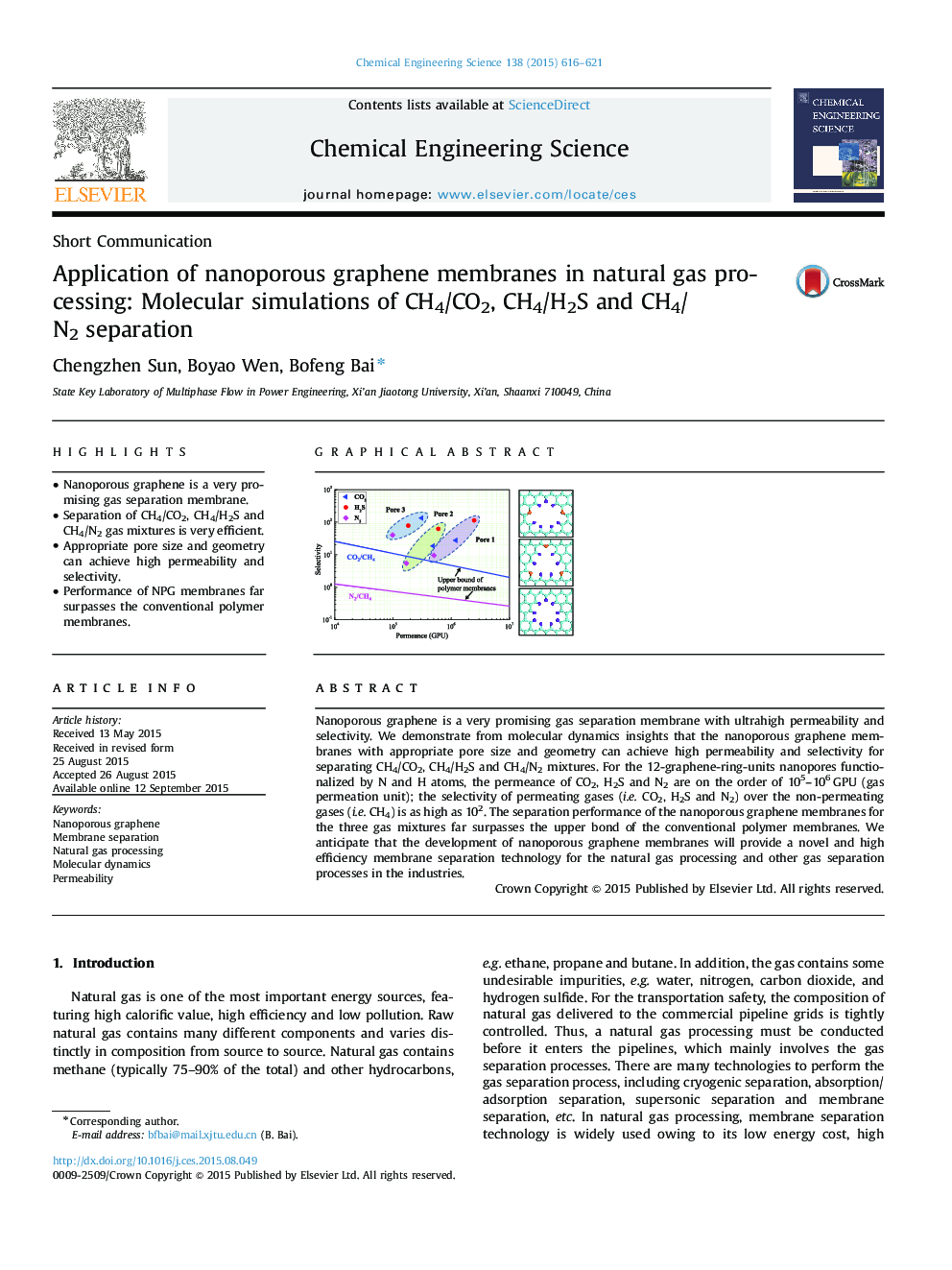| Article ID | Journal | Published Year | Pages | File Type |
|---|---|---|---|---|
| 154654 | Chemical Engineering Science | 2015 | 6 Pages |
•Nanoporous graphene is a very promising gas separation membrane.•Separation of CH4/CO2, CH4/H2S and CH4/N2 gas mixtures is very efficient.•Appropriate pore size and geometry can achieve high permeability and selectivity.•Performance of NPG membranes far surpasses the conventional polymer membranes.
Nanoporous graphene is a very promising gas separation membrane with ultrahigh permeability and selectivity. We demonstrate from molecular dynamics insights that the nanoporous graphene membranes with appropriate pore size and geometry can achieve high permeability and selectivity for separating CH4/CO2, CH4/H2S and CH4/N2 mixtures. For the 12-graphene-ring-units nanopores functionalized by N and H atoms, the permeance of CO2, H2S and N2 are on the order of 105–106 GPU (gas permeation unit); the selectivity of permeating gases (i.e. CO2, H2S and N2) over the non-permeating gases (i.e. CH4) is as high as 102. The separation performance of the nanoporous graphene membranes for the three gas mixtures far surpasses the upper bond of the conventional polymer membranes. We anticipate that the development of nanoporous graphene membranes will provide a novel and high efficiency membrane separation technology for the natural gas processing and other gas separation processes in the industries.
Graphical abstractFigure optionsDownload full-size imageDownload high-quality image (515 K)Download as PowerPoint slide
